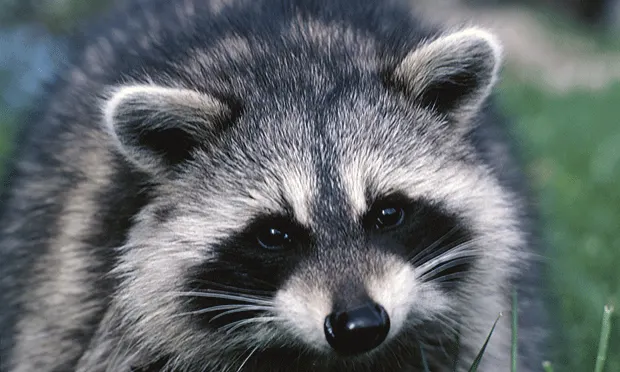Baylisascaris procyonis & Raccoon Feces Ingestion
J. Scott Weese, DVM, DVSc, DACVIM, FCAHS, University of Guelph, Ontario, Canada

The parents of a 5-year-old boy contacted their veterinarian after consultation with an infectious disease physician.
History
The family lived in an urban area, close to a large park. The child, who had been diagnosed with developmental delay and had a history of pica, was observed ingesting raccoon feces at the park. One parent reached into the child’s mouth and retrieved some of the feces, then took the feces and child to their physician. The physician submitted the raccoon feces for parasite testing, and Baylisascaris procyonis was identified. After consultation with an infectious disease physician, prophylactic albendazole was prescribed.
The family’s dog, a 2-year-old castrated golden retriever, was regularly taken to the park, frequently off-leash. The physician expressed concern about the dog possibly being infected with B procyonis and being a potential source of exposure.
Related Article: Unusual Fecal Parasite in a Dog
Examination
At examination, the dog was clinically normal. He had been receiving monthly heartworm prophylaxis with a product that contained moxidectin and imidacloprid.
Ask Yourself
Which approach is recommended?
A. PCR testing the dog’s feces for B procyonis.
B. Prophylactic treatment of the dog with a product effective against nematodes (eg, moxidectin).
C. Close monitoring of the dog for any signs of neurologic disease.
D. Conduct fecal flotation for evidence of B procyonis eggs.
E. Restricting the dog’s access to the park and other areas with known raccoon populations.
B procyonis, (ie, raccoon roundworm) is common in raccoons and is a cause of rare but potentially devastating neural larva migrans in humans. Raccoons are the natural host of this large nematode, and shedding rates can be up to 92% in healthy raccoons.1-4 Infected raccoons can shed millions of eggs per day in feces, and as raccoons tend to defecate in specific areas (raccoon latrines), some environmental sites can become extremely contaminated.5,6 As with other roundworms, B procyonis eggs are not immediately infective and second-stage larvae must develop in eggs in the environment over 2 to 4 weeks.7 Infection can occur after ingestion of infective eggs.
Related Article: Baylisascaris Expansion—A Zoonotic Threat
Neural larva migrans associated with Baylisascaris spp can occur following ingestion of infective eggs by humans (and many other species, including dogs8,9), with larval migration through brain tissue. Cases reported in humans have mostly involved young children and children with developmental delay, groups that may be more prone to pica or geophagia.10,11 While ingestion does not necessarily result in disease, prophylactic treatment of individuals exposed to contaminated feces has been recommended because of potential risk for severe disease.12
Canine Exposure
Dogs can be exposed to B procyonis eggs in the environment and while patent infections can occur,7 this seems to be rare. Risk for human exposure from contact with a dog that has a patent infection is rather low, as long as basic fecal handling and hygiene practices are used; however, dog–human transmission has been suggested.11 B procyonis has been susceptible to anthelmintics often used in dogs to target other nematodes (ie, Toxocara canis). The low likelihood of patent infection and the ability to eliminate the parasite with monthly prophylaxis already in use makes testing of the dog of limited usefulness. Treatment beyond the normal antiparasitic (antiascarid) program is unnecessary, although the owner should understand the importance of compliance.
A dog can also act as a mechanical vector of infective B procyonis eggs, which are highly resistant to environmental effects and can remain viable in the environment for a prolonged time.7 Because the eggs have a sticky coating, exposure to contaminated environments could result in egg transmission onto a dog’s hair coat. Dogs should therefore be kept away from raccoon latrines to minimize likelihood of coat contamination.
Treatment Measures
If contact with old raccoon feces or a raccoon latrine has occurred, bathing the dog to attempt removal of eggs is reasonable, provided basic hygiene practices are used to prevent exposure (eg, wearing a lab coat or other outerwear, good hand hygiene, bathing outdoors if possible).13 A preferable approach is avoiding coat contamination by avoiding exposure to raccoon latrines or restricting access to areas where raccoons may live and measures to eliminate raccoon latrines.
The Take-Home
B procyonis, the raccoon roundworm, is highly prevalent in raccoons.
Neural larva migrans is a rare but devastating disease that can develop after ingestion of feces containing infective eggs.
Although dogs can develop patent infections with B procyonis, this is rare. B procyonis is susceptible to routine treatments directed against Toxocara canis.
Contamination of the hair coat is a potential, but unproven, source of human exposure.
Routine deworming, good fecal handling, thorough hygiene practices, and avoidance of areas contaminated with raccoon feces should minimize zoonotic risks posed by this parasite.